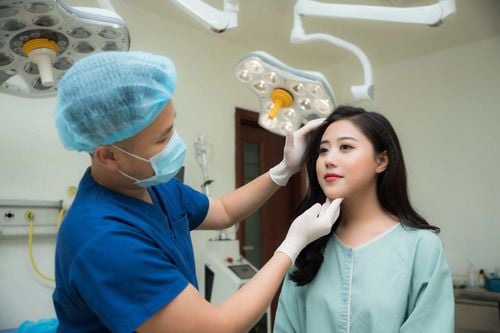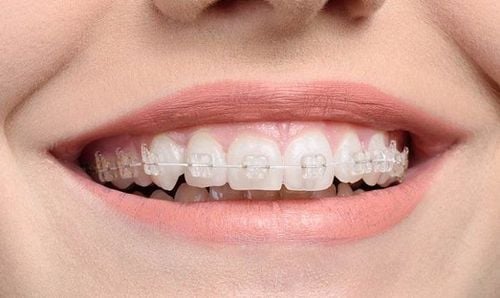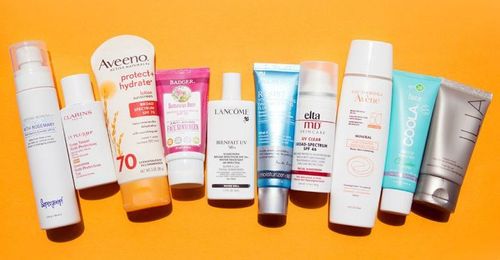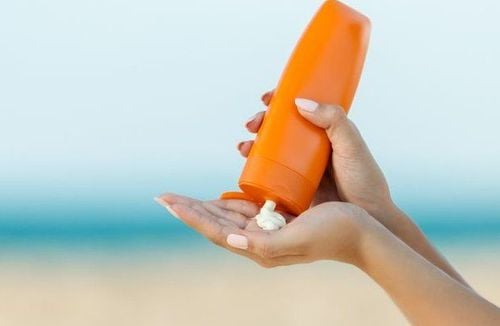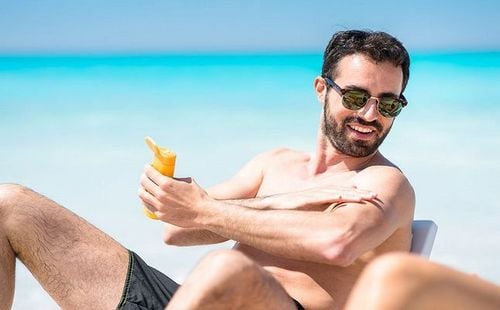This is an automatically translated article.
“What is a broad spectrum sunscreen” is sometimes confusing for many women when choosing this product for the first time. Only when you understand the meaning and effects of broad-spectrum sunscreen to know how to choose, sunscreen will protect your skin from ultraviolet rays from the sun, thereby helping to prevent skin cancer and aging. premature skin and sunburn.1. What is a broad spectrum sunscreen?
The sun emits electromagnetic radiation at different wavelengths, including infrared, visible light, ultraviolet, and X-rays. Originally, sunscreens were designed to protect against UVB rays, raw cause sunburn, but there is little concern for UVA rays, which are believed to be helpful in creating a "healthy" tan. However, today, UVA rays are also known to damage the skin and contribute to premature skin aging and some forms of skin cancer. At this point, a good broad-spectrum sunscreen will protect against most UVA and UVB rays from as little as 370nm to 280nm. UVC is not a concern as it does not penetrate the ozone layer and therefore does not reach the skin. On the other hand, the effect of blue light on human skin is also a growing concern.
2. Effects of broad-spectrum sunscreen
Protect skin from blue light This is one of the effects of broad spectrum sunscreen. Blue light is also known as high-energy visible light (HEV), which is the closest part of the visible light spectrum to ultraviolet light. These longer wavelengths (than UV rays) penetrate deeper into the skin to produce collagen and elastin. HEV light has enough energy to generate free radicals that damage skin cells and cause premature skin aging, with manifestations such as wrinkles, loss of elasticity and dullness.
HEV is the type of light emitted by televisions, computers, mobile phones and LED bulbs along with fluorescent bulbs. Although the emissions from these devices are much less than that of sunlight, there is growing concern about the type of exposure to these devices.
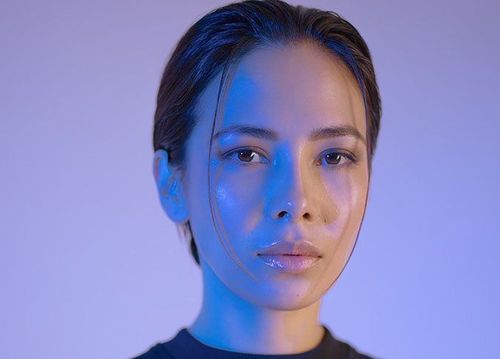
Kem chống nắng quang phổ rộng bảo vệ da khỏi ánh sáng xanh
Even so, people can protect their skin from the harmful effects of HEV light with products that contain minerals and antioxidants. At this point, mineral-based broad-spectrum sunscreens, such as those with zinc oxide, physically block at least some of the visible light from reaching the skin while chemical sunscreens don't. On the other hand, products that contain the mineral iron oxide (such as many tinted sunscreens) also help protect the skin from HEV light.
The mechanism of antioxidants that protect the skin from blue light in broad spectrum sunscreens is by removing free radicals generated by blue light, ultraviolet rays, air pollution and other environmental agents, helping skin retain its youthful, natural smooth appearance.
Protects skin from UVA This is the sun's rays with a wavelength of 320-400nm. UVA rays are not blocked by glass, clouds or the ozone layer, and thus they make up most of the UV radiation reaching the Earth's surface. UVA rays have the same intensity year round and they penetrate deeper into the skin (into the dermis, the 2nd layer of the skin), causing photo-aging, active ingredient damage, wrinkles, roughness, have many pigments. At the same time, UVA also contributes to skin cancers including melanoma.
Therefore, the effect of a broad-spectrum sunscreen with the active ingredient mineral zinc oxide will focus on helping to protect the skin from UVA rays more comprehensively.
Protects skin from UVB This is the sun's short wavelength 290-320 nm, most of which is absorbed by the ozone layer. UVB rays have different intensities, depending on the position of the sun, and can be reduced by clouds. UVB rays penetrate only the epidermis (outer skin) causing sunburn and are considered a major cause of basal cell and squamous cell carcinomas, and an important factor in melanoma count.
The active sunscreen ingredient is zinc oxide in broad-spectrum sunscreen products in particular or all sunscreens in general, which are effective with all wavelengths of UVB rays.
Protect skin from UVC This is the sun's rays with extremely short wavelength 200-290nm. UVC rays are blocked by oxygen in the ozone layer's atmosphere and do not reach the Earth's surface in appreciable amounts. UVC is very harmful to the skin, with smaller wavelengths followed by X-rays, but they pose only a threat to astronauts and high-flying pilots.
However, a quality broad spectrum sunscreen with really broad spectrum can even block UVC rays.
2. Why is the “broad spectrum sunscreen” factor important?
So why is it important to protect skin from both UVA and UVB rays? UVB rays cause sunburn. So, protecting your skin from UVB will help avoid sunburn and the pain associated with skin burns. UVB rays also play a role in skin aging and skin cancer. One thing to know about UVB rays is that they are less common in winter, morning and evening. But like anyone who gets sunburnt at the end of the day or winter, when skiing, skin still needs protection.
Unlike UVB, UVA rays are equally common throughout the year and at all times of the day. They actually account for 95% of the UV radiation reaching the earth. Best of all, although they don't cause sunburn, they are a leading cause of skin cancer and skin aging. Therefore, the skin always requires the use of broad-spectrum sunscreen to get the most comprehensive protection.
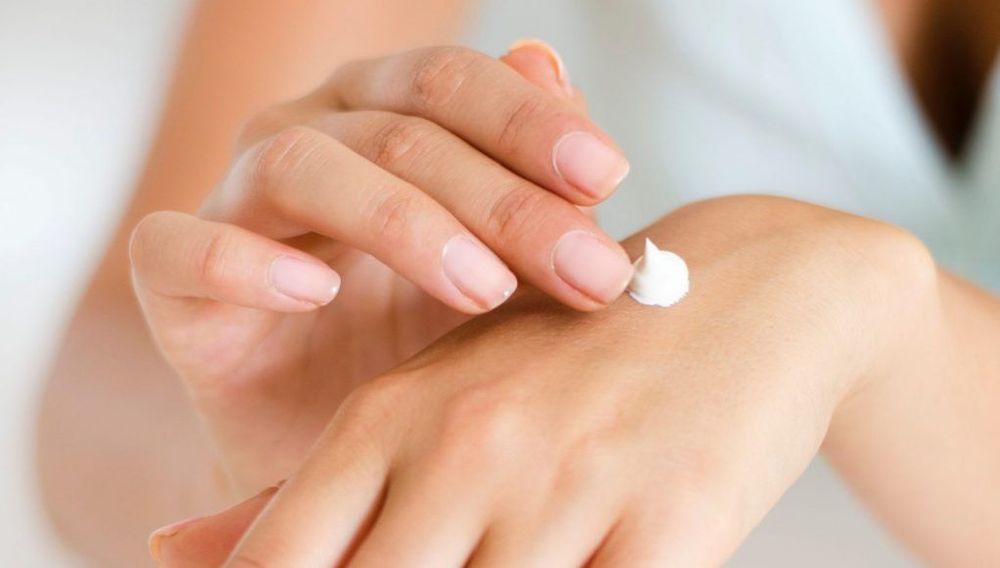
Kem chống nắng quang phổ rộng có hiệu quả cao khi bạn sử dụng đúng cách
3. How is the SPF number related to the concept of “broad spectrum”?
For broad-spectrum sunscreens, the SPF of these products is often also used as a relative measure of the degree of protection of the term “broad spectrum.”
However, SPF is only The significance is related to UVB protection, so while it's not an accurate measure of UVA protection, a higher SPF will provide better UVA protection. compared to the same sunscreen formula with a lower SPF.In practice, though, for a product to be labeled "broad spectrum," that sunscreen is always required to have at least SPF 15.
4. How to choose and use an effective broad spectrum sunscreen
Broad-spectrum sunscreen products will have a label printed on the package indicating that this is a sunscreen that protects against UVA and UVB radiation. Furthermore, dermatologists recommend using a broad-spectrum sunscreen with at least SPF 30 if users are exposed to the sun for long periods of time. In addition, sunscreen with SPF 15 should also be used regularly every day and SPF 30 or higher for days outdoors.
Here are some more tips for using broad spectrum sunscreen effectively:
Shake the sunscreen before applying so the ingredients are mixed. Always apply the cream on your skin 30 minutes before going outside. Always reapply sunscreen at least every 2 hours or when out in the water. This should be followed regardless of sunscreen use with any SPF. People who are more prone to skin burns should reapply sunscreen more often. In addition, users should not subjectively rely solely on broad-spectrum sunscreen, but should note the following details to help avoid sun exposure:
Quickly get out of the sun; Go indoors or find shade to reduce exposure. Wear protective clothing - loose, long clothing that covers the skin. Wear a hat, sunglasses, and lip balm with SPF to protect the parts of your body (scalp, eyes, lips, etc.) that sunscreen can't cover.
In summary, the information describing a sunscreen product can be a bit confusing for beginners. However, there are two most important things to remember: choosing a broad-spectrum sunscreen that can protect your skin from UVB and UVA rays, and always using a sunscreen with SPF 15 or higher. At this time, applying new sunscreen can help reduce the risk of skin cancer, keep skin healthy and prevent burning effectively.
Please dial HOTLINE for more information or register for an appointment HERE. Download MyVinmec app to make appointments faster and to manage your bookings easily.




